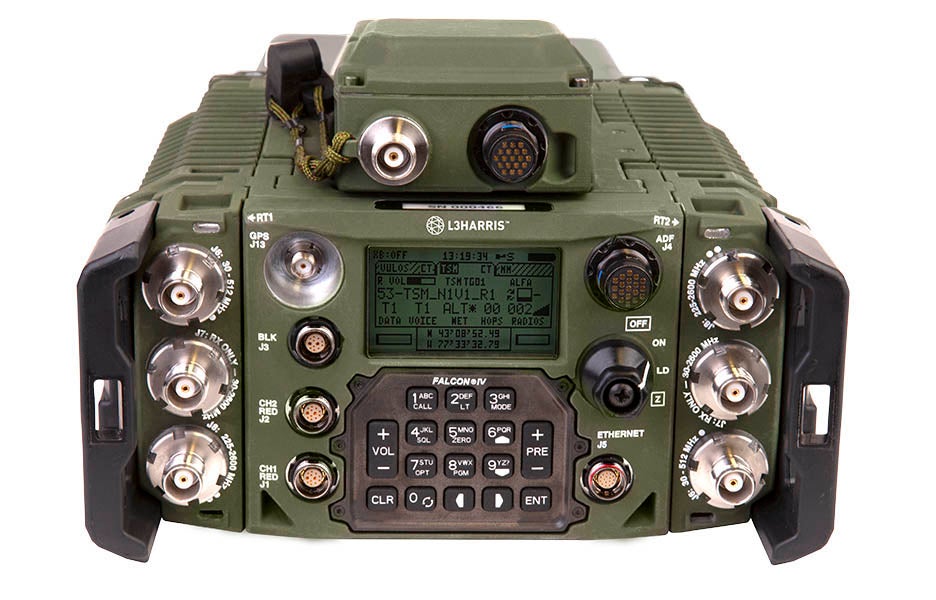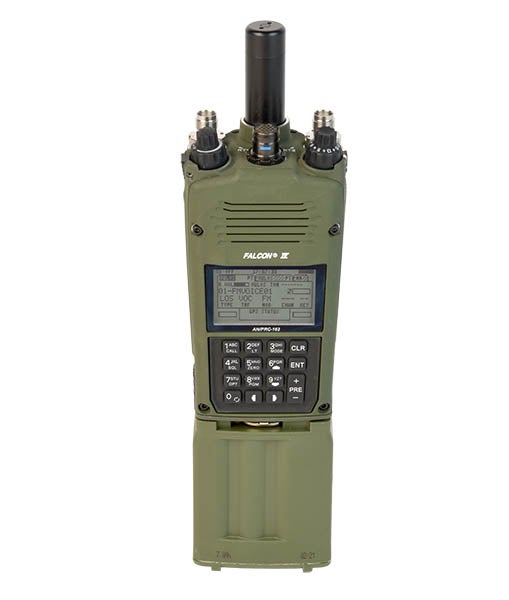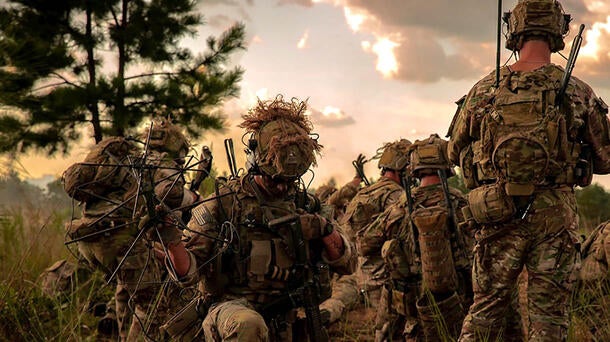
L3Harris Technologies is providing Special Operations Forces (SOF) more network connectivity, global interoperability, Situational Awareness and resilience than ever before.
The AN/PRC-167 Next Generation Manpack is a new L3Harris Software Defined Radio in the company’s next-generation Command, Control, Communications, Computers, Intelligence, Surveillance and Reconnaissance (C4ISR) family of systems. Leveraging decades of tactical communications support for the U.S. warfighter, this product line provides the most-interoperable and capable system in the world, creating a complete ecosystem of leading-edge C4ISR capabilities with resilient capabilities against near-peer threats.
“Special Operations Forces are constantly pushing boundaries to execute their missions with greater stealth and speed,” Dana Mehnart, L3Harris Communication Systems president, said. “The AN/PRC-167 provides situational understanding between the tactical edge and command elements, allowing cognitive overmatch in any operational scenario.”

As part of the Falcon IV family of tactical radios, the AN/PRC-167 shares the same interface as other products within the family, including the AN/PRC-163 Multi-channel Handheld Radio. This commonality speeds deployment by minimizing training time and, further, reduces sustainment costs via compatible cables, connectors, batteries and accessories.

"Special operations are making significant modernization advancements. Hyper-enabled teams address the toughest problems our operators will face at the most fundamental level: how they shoot, move, communicate and survive in highly contested environments. Organic capability is what we will need to fight mobile, independently, and disaggregated. We must be able to process a large amount of real-time information and deliver precision-organic fires all while staying undetected. We are investing in low probability of intercept and detection of high-bandwidth resilient communications networks… and any technology that minimizes our signature or provides 'digital camouflage'."
Since October 2020, the company has received more than $150 million in USSOCOM AN/PRC-167 orders as part of the Indefinite Delivery/Indefinite Quantity (IDIQ) contract under the Next Generation Tactical Communications (NGTC) program. In addition to the AN/PRC-167 contract, USSOCOM awarded the company an IDIQ contract for Falcon IV AN/PRC-163 multi-channel handheld radios.
In November 2020, the U.S. National Security Agency granted L3Harris Type-1 certification for the AN/PRC-167.
The initial U.S. Defense Department AN/PRC-167 concept was a two-channel crypto-modernization replacement to the combat-proven AN/PRC-117G. SOF customers also sought enhanced Mobile Ad-Hoc Networking (MANET) capabilities to power tactical mission networks.
“Their vision was for multiple functions and channels, embedded into a single system,” Robert Gnam, L3Harris USSOCOM Team lead, said. “We set out to accomplish several ambitious goals: integrate multiple devices into one to reduce weight and increase interoperability; add data routing and high-speed MANET networks; create crossbanding and gateway functions to connect networks together; and innovate a flexible mission module concept.”
INDUSTRY-LEADING TECHNOLOGY
One of the key advantages of the AN/PRC-167 is access to two channels, operating anywhere from 30 MHz to 2.6 GHz, with similar size, weight and power of the AN/PRC-117G, John Serio, L3Harris Product Line manager, said.
“These are very frequency-agile receivers,” Serio said. “Further, we have a very impressive waveform library. The waveforms themselves are the tools the customer uses to communicate, enabling them to pick the right tool for the job with the turn of a knob.”
The AN/PRC-167 is also the first multi-channel manpack radio that is software upgradable and features mission-specific adaptability through a mission module. This feature opens opportunities for rapid software upgrade transitions for emerging capability requirements.
“The mission module now allows the user to easily add on new, emerging or niche technology by creating a mobile phone-size device that does exactly what you want,” Gnam said. “You plug it into the port on the radio and it behaves as if you added a third channel.”
These modules can extend beyond specifically communications, to include additional processing, data routing, interfacing or Full-Motion Video capabilities, Serio added.
“The value of the mission module is that it allows the radio to evolve with the customer,” he said, noting L3Harris radios provide Type 1 security to the modules. “As their needs change, the radio can change, so they don’t have to reinvest in a new platform. It keeps the interface familiar, so there’s a lot less retraining. You can deploy multiple mission modules to adapt the radio to the mission. There’s a lot of flexibility in this model, and it provides a lot of advantage for the customer and the end user.”
In addition to the three-channel capability when including the mission module and L3Harris’ extensive resilient waveform library, the AN/PRC-167 provides built-in PACE (Primary, Alternate, Contingency, Emergency) capability. This enables operators to adapt among communications alternatives as needed – from MANET networks, to resilient MANET networks, to multiple LOS and SATCOM alternatives. The AN/PRC-167 also shares a new and easy web user interface (WebUI) with the AN/PRC-163.
LOOKING FORWARD
The AN/PRC-167—with software-defined, hardware-enabled flexibility—is gaining momentum and acceptance in various programs, from dismounted users to maritime operations in addition to integration activities on ground vehicles and rotary- and fixed-wing aircraft. Further, L3Harris’ deep and broad technology enterprise enables standards-based, interoperable, end-to-end solutions for all customers.
As customers realize the full potential of the product and its application to a variety of missions, “the AN/PRC-167 will play a central role in the vision for the resilient network of the future,” Gnam said.
